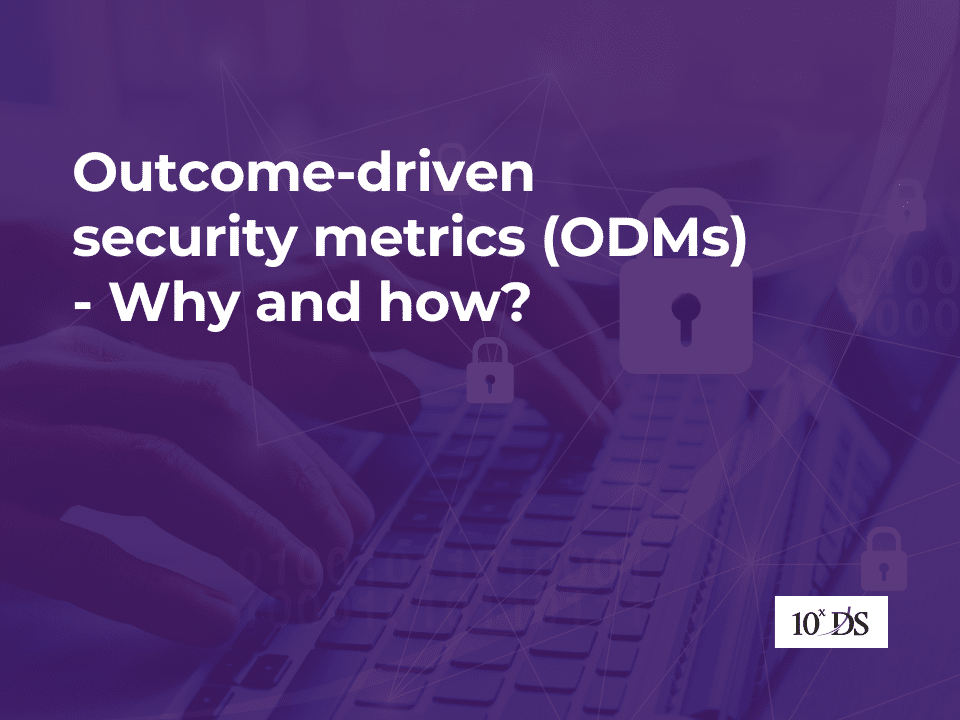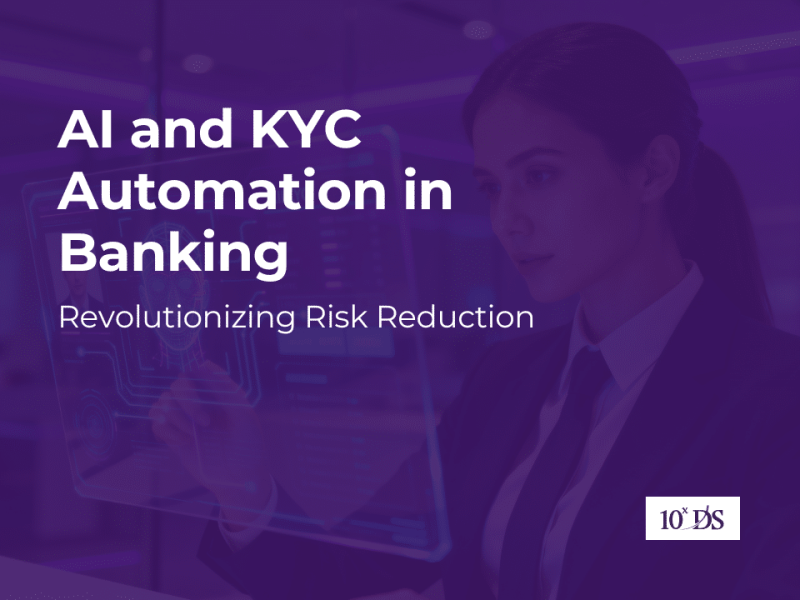
Outcome-driven security metrics (ODMs) – Why and how?
A security matrix typically refers to a structured representation of security controls, risks, and their relationships. It helps organizations assess their security posture by mapping controls to specific risks or threats. Focus of a traditional security matrix was control effectiveness and risk. Instead of focusing solely on whether security controls are implemented correctly, organizations need to ensure that the results these controls produce is valuable. Outcome-Driven Security Metrics (ODMs) provides this comprehensive approach to evaluating the effectiveness of security measures. This approach provides a clearer picture of how security efforts contribute to the overall security posture and business objectives.
What are the key features and benefits of ODMs?
1. Focus on Results:
ODMs measure the impact of security controls in terms of tangible outcomes, such as reduced incidents, minimized risk, and enhanced resilience. For instance, instead of just tracking the number of firewalls installed, ODMs would evaluate how those firewalls have reduced the number of successful cyber-attacks. Specific performance indicators might include metrics like the reduction in time to detect and respond to threats, the decrease in the frequency and severity of security incidents, and the overall improvement in the organization’s security posture over time. Examples of the outcome that ODM approach tracks are tangible outcomes can include fewer data breaches, quicker recovery times after incidents, and lower overall security-related costs due to more efficient and effective controls.
2. Business Context:
ODMs consider the broader business context, ensuring that security goals are aligned with the organization’s overall objectives. This alignment ensures that security initiatives support business growth, compliance, customer trust, and other strategic goals. By integrating security metrics with business priorities, organizations can better manage risks that could impact their strategic objectives. For example, protecting customer data not only prevents breaches but also maintains customer trust and compliance with regulations. Using business context helps in communicating the value of security investments to non-technical stakeholders, such as executives and board members, by translating technical metrics into business-relevant outcomes.\
3. Cost-Value Trade-Offs:
ODMs assess the value of security investments against the associated costs. This involves analyzing whether the resources spent on security controls provide a return on investment in terms of risk reduction and other benefits. By understanding the cost-value trade-offs, organizations can allocate their security budgets more effectively, prioritizing investments that offer the highest return. This can lead to more efficient use of resources and better overall security. Cost-value analysis helps in optimizing the security portfolio, ensuring that each dollar spent contributes maximally to enhancing the organization’s security posture. This might involve re-evaluating existing controls and investing more in high-impact areas.
4. Cloud-Specific ODMs:
In cloud environments, ODMs help allocate appropriate spending on cloud-specific controls rather than using a fixed percentage of overall cloud spending. This approach recognizes that different cloud services and environments might require different levels and types of security investments. ODMs enable dynamic allocation of resources based on the specific security needs and risks associated with various cloud services. For example, mission-critical applications might require more robust security controls compared to less critical ones. Cloud-specific ODMs measure the effectiveness of cloud security controls, such as data encryption, identity and access management, and security monitoring, in achieving desired security outcomes. This ensures that the security measures in place are effectively protecting cloud-based assets and data.
How do you implement ODMs in your organization?
Implementing Outcome-Driven Security Metrics (ODMs) involves a methodical approach to ensure that security measures are effectively aligned with desired outcomes and organizational objectives.
1. Developing Initial Processes and Supporting Technologies
In the initial stage, the focus is on establishing a clear and organized list of security processes along with the technologies that support them. This involves identifying the main security processes essential to the organization and mapping them to the relevant technologies used to implement these processes. For example, endpoint protection might be supported by Extended Detection and Response (XDR) and Endpoint Detection and Response (EDR) technologies, while vulnerability management utilizes vulnerability scanners, and authentication is implemented through Identity and Access Management (IAM) systems and Directory Services. This foundational step ensures that there is a structured framework in place for measuring and managing security efforts.
2. Identify Business Outcomes and ODMs
The second stage aims to align security processes with business outcomes by identifying specific priorities and desired results for each process. This involves defining what is most important for each security process in terms of business impact and specifying the outcomes that indicate successful implementation and effectiveness. For instance, in endpoint protection, priorities might include deployment coverage and threat identification, with outcomes measured by the number of endpoints protected and threats mitigated. Similarly, for vulnerability management, scan frequency and comprehensiveness, along with threat severity identification, are key priorities, with outcomes reflected in the percentage of systems scanned and high-severity vulnerabilities resolved. This stage ensures that security efforts are directly tied to business objectives.
3. Identify Risk and Dependencies
Understanding the risks and dependencies related to the technologies and processes is crucial for managing potential failures and their impacts on business operations. This stage involves analyzing the dependencies of each process on specific technologies and evaluating the consequences if a key technology fails or is compromised. For example, endpoint protection depends on XDR and EDR solutions, and their failure could expose endpoints to threats. Similarly, vulnerability management relies on vulnerability scanners, and their failure could leave vulnerabilities unaddressed, increasing the risk of exploitation. Identifying these risks and dependencies helps in planning for contingencies and ensuring continuity of security operations.
4. Define ODMs
In the fourth stage, the focus is on developing specific metrics that reflect the effectiveness of security processes in achieving the desired outcomes. This involves creating metrics that are directly related to operational outcomes and protection levels for each process, ensuring they are measurable, clear, and provide actionable insights. For example, metrics for endpoint protection might include the percentage of endpoints with active protection and the average time to detect and respond to threats. For vulnerability management, metrics could include the percentage of systems scanned regularly, the average time to remediate identified vulnerabilities, and the number of high-severity vulnerabilities resolved. Defining these metrics ensures that security efforts can be quantitatively assessed and continuously improved.
5. Assess Readiness and Risk
The final stage involves evaluating the organization’s readiness to implement ODMs and assessing the risks associated with their implementation. This includes determining if the organization has the necessary resources, skills, and infrastructure to effectively manage and monitor ODMs. For instance, it is essential to ensure that the security team has the expertise to analyze and act on ODM data, and that the IT infrastructure can support the required data collection and analysis. Additionally, potential risks, such as data accuracy issues, the impact of new metrics on existing processes, and resistance to change, need to be identified and mitigated. Developing strategies to address these risks, such as providing additional training for staff or implementing ODMs incrementally, ensures a smoother transition and more effective adoption of outcome-driven security metrics.
ODMs represent a paradigm shift in cybersecurity management and it plays a critical role in helping organizations measure the effectiveness of their security investments in terms of both operational performance and desired business benefits. As technology advances, AI models enhance ODMs by providing data-driven insights, automating processes, and improving decision accuracy. Organizations that leverage AI effectively can align security efforts with business outcomes and achieve stronger protection. Talk to our experts to know more.


